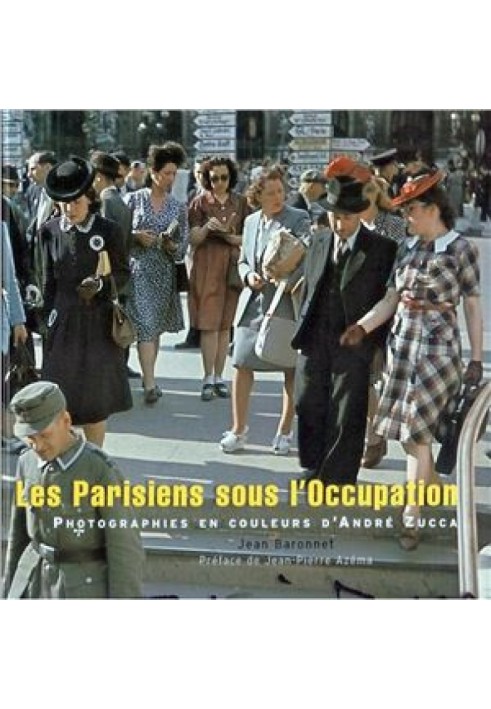Paris and Parisians during the years of occupation (1940-1944)
 Instant download
Instant download
after payment (24/7)
 Wide range of formats
Wide range of formats
(for all gadgets)
 Full book
Full book
(including for Apple and Android)
They prefer to remember the period of occupation in France as a heroic time: Charles de Gaulle, the Resistance... However, impartial photo chronicles indicate that everything was not exactly as they say in history textbooks. Color film, sunny days, the smiles of the French, German uniforms on the streets of Paris and yellow stars on the chests of Jews. Collaboration is the price paid for the fact that Paris avoided the fate of Rotterdam, London, Stalingrad, Dresden.... In 2008, a selection of photographs by Andre Zucca was presented at the exhibition “Parisians during the Occupation”, which caused a huge scandal and a ban on showing the exhibition by the Paris mayor’s office - so there was a great difference between the traditional image of the occupation and the carefree, smiling faces of Parisians in the photographs. We still managed to get permission, but France saw these pictures only once - public opinion could no longer afford a second time. The contrast between the heroic legend and reality turned out to be too striking. List of illustrations: Changing of the guard. 1941. Orchestra on Republic Square. 1943 or 1944. Commandant's office on the corner of 4 September Street and Avenue of the Opera. Parisian cafe. Beach near the Carrousel bridge. 1943. Parisian rickshaw. Bicycle taxi in front of the Maxim restaurant on Mira Street. 1942.Velotaxi. 1942.Parisian. 1942.Advertising poster: “If you want to earn more... come and work in Germany.” 1943.At the Vincennes Zoo.Street sign.Resettlement.Fashionable glasses.Cinema.On the Trocadéro.Paris Street.On the Rue de Rivoli.Cinema on the Rue de Rivoli.Rue Rosier in the Jewish quarter of the Marais (Jews had to wear yellow star on the chest). 1942. Fair in the Nation quarter. 1941. Carousel at a fair in the Nation quarter. Baths on the Seine. Fishermen on the Seine. 1943. Place de la Concorde. 1942. Showcase with a photograph of Marshal Pétain. Kiosk on rue Gabriel. Metro Marbeuf - Champs Elysees (now Franklin Roosevelt). 1943. Fiberglass shoes with a wooden last. Poster for the exhibition at the Arc de Triomphe on the corner of Tilsit Street and the Champs Elysees. 1942.View of the Seine and Notre Dame Cathedral from the Quai Saint-Bernard. 1942. Famous milliners Rose Valois, Madame Le Monnier and Madame Agnes during the races at the Longchamp racecourse. August 1943. Weighing of jockeys at the Longchamp racecourse. August 1943. At the Tomb of the Unknown Soldier under the arches of the Arc de Triomphe. 1942.In the Luxembourg Gardens. May 1942. Text on the poster in the center: “They give their blood, you give yours.” labor to save Europe from Bolshevism." The inscription on a poster issued after the bombing of Rouen (where Joan of Arc was executed) by British aircraft in April 1944 reads: "Murderers always return ... ... to the scene of the crime." Gas-fuelled city bus .At the top is a car with a gas generator; The fuel for the car below is compressed gas. April 1942. In the park of the Palais Royal. Central market. 1942. Central market. One of the metal pavilions from the Napoleon III era that existed before 1969 is visible. July 1942. The Central Market is the “belly of Paris.” These people were called “meat bosses.” Luxembourg Gardens. May 1942. National funeral of Philippe Henriot, Secretary of State for Information and Propaganda, who advocated full cooperation with the occupiers, killed on June 28 1944 by resistance fighters.
Data sheet
- Name of the Author
- Андре Зукка
- Language
- Russian











